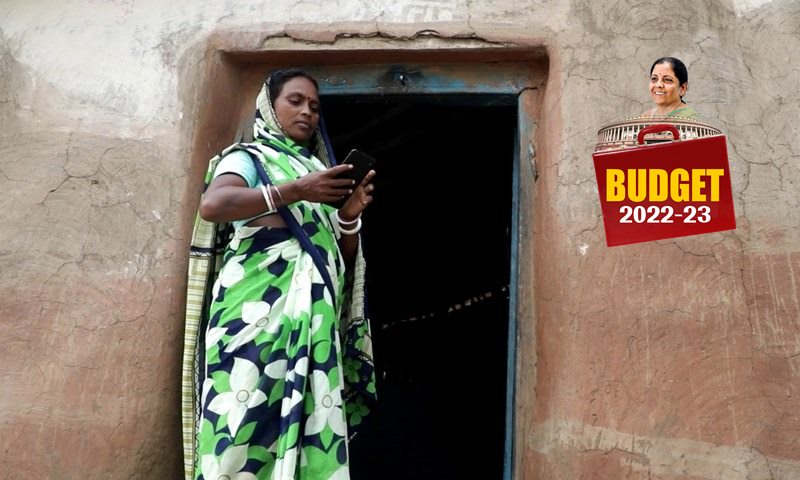Budget 2022: Focus on e-services in rural areas, optical fibres in all villages by 2025
Finance Minister Nirmala Sitharaman said that contracts for laying optical fibres in all villages will be awarded under 'Bharat Net project' in 2022, 2023. The project is likely to complete by 2025.


The finance minister also said that the roll-out of 5G mobile services will be facilitated in 2022-23 by private telecom providers. Photo: By arrangement
The COVID19 pandemic has widened the gap between urban and rural areas, as a large number of villages in India still do not have access to the Internet or the digital world. Taking note of it, in her Budget 2022 speech, Finance Minister Nirmala Sitharaman said that the government’s “vision is all villages and their residents should have same access to e-services as urban areas.”
“Contracts for laying optical fibres in all villages to be awarded under ‘Bharat Net project’ in 2022, 2023. The project is expected to be completed in 2025,” said Sitharamana.
The finance minister also said that the roll-out of 5G mobile services will be facilitated in 2022-23 by private telecom providers. Also, a complete paperless end-to-end online e-bill system to be launched for use by all Central Ministries for their procurement, to enhance transparency and reduce delays in payments. Such a system will enable online submission of digitally signed bills, tracking claims from anywhere, said FM Sitharaman.
For the past couple of years, the Indian government has been talking of optical fibres in all villages. On August 15, 2020, Prime Minister Narendra Modi had announced that “the task to connect India’s over six lakh villages with optical fibre network will be completed in the next 1,000 days.” Addressing the nation from the ramparts of the Red Fort on India’s 74th Independence Day, he had pointed out that only five dozen panchayats in the country were connected with optical fibre cable before 2014.
In 2014, the Narendra Modi government inherited the National Optical Fibre Network initiative that had been launched in 2011, rebranded it as ‘BharatNet’, and introduced several changes to its structure and operations. It was then given a new impetus by making it a pillar of the Digital India programme.
BharatNet’s goal is to provide high-speed broadband connectivity to the 250,000-plus village panchayats spread across India’s 6,600 blocks and 640 districts. It is to act as a middle-mile network from blocks to panchayats allowing Internet service providers (ISPs), local cable operators, and other agencies to use its bandwidth and incremental fibre.
In doing so, it will facilitate access to e-governance, telemedicine, e-education, and other digital services at the primary level of village administration. Since 2017, the project has also sought to provide last-mile connectivity by setting up Wi-Fi hotspots in villages, reads an Observer Research Foundation (ORF) paper, ‘Lighting up homes in villages’: Will BharatNet live up to its promise?, by Anirban Sarma.

